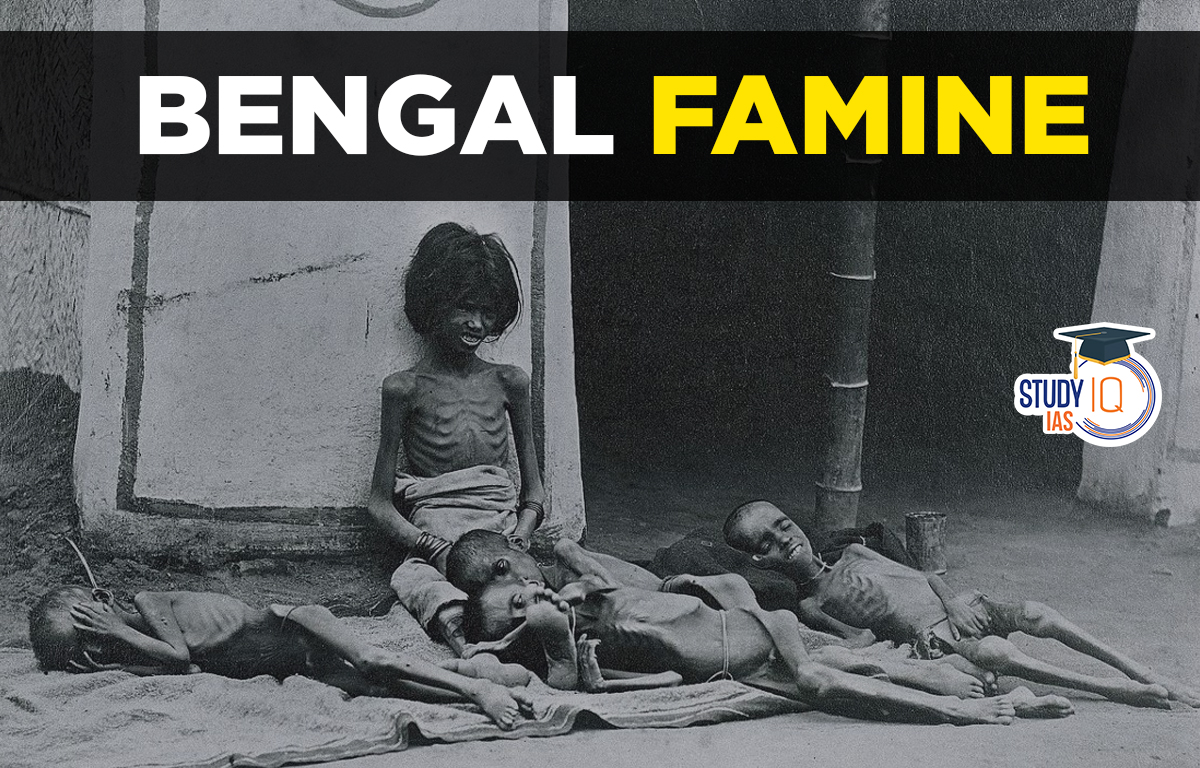Table of Contents
Bengal Famine
The famine that struck Bengal in British India in 1943 is known as the Bengal famine. Three million people perished as a result of starvation or sickness. While many famines are caused by insufficient food supplies, the Bengal famine was not accompanied by a material decline in food production.
The famine, which Amartya Sen, an economist from India, saw firsthand as a nine-year-old boy, was caused by an entitlement failure. In other words, economic reasons that hampered some groups of people’s ability to buy food were the main obstacles to the distribution of the food supply throughout Bengali society.
The availability of food was only slightly impacted by the events of 1942. Rice exports from Singapore and Burma (Myanmar), which were occupied by Japan in 1942 during World War II, were stopped. In addition to harming the autumn rice crop, a hurricane in October 1942 also put pressure on the crop the next year since many subsistence farmers had to eat grain intended for planting in order to survive. However, the 1942 ban on rice imports to India did not start the famine, and the crop yield in 1943 was really enough to feed the Bengali people.
Read More: Revolt of 1857
Bengal Famine 1770
Between 1769 and 1773, a terrible famine decimated the lower Gangetic Plains of India, including the states of Bengal and Bihar, killing one-third of the population. An estimated 10 million people perished from illnesses brought on by famine that also hit Assam, Odisha, Jharkhand, and Bangladesh. The British East India Company at the time was in charge of the region.
The famine was one of numerous famines and diseases brought on by famine that wreaked havoc on the Indian subcontinent in the 18th and 19th centuries. Usually, the weather and the East India Company’s policies are blamed together. Two successive unsuccessful rice crops and a failed monsoon in 1769 are thought to have contributed to the beginning of the famine.
The East India Company’s exploitative tax revenue policies after 1765, coupled with the devastation caused by war, devastated the economic potential of the rural populace. Modern scholarship, however, contends that taxes only had a little impact.
Read More: Permanent Settlement 1793
Bengal Famine 1943
In Bengal, India, there was a severe famine in 1943 that claimed the lives of around 4 million people. When India was split into two independent nations at the time of Partition in 1941, with Pakistan having its own state, the situation began to deteriorate. British assistance made war efforts possible until the Japanese invaded Burma (now Myanmar) and seized control of Bahadurgarh Airfield in 1943.
Read More: Mahalwari System
Bengal Famine Causes
The British East India Company had gained control of the Diwani privileges over Bengal following the Battle of Plassey and the Battle of Buxar. The true authority lay beneath the company’s leadership, with the Nawab serving mainly as a symbolic leader. The firm entirely disregarded the hardship of the local farmers and others in favour of increasing income and profits for itself.
The tax rate on land revenue was only around 1/10th of the tax rate on agricultural products prior to the company’s rule. However, the corporation suddenly upped it to 50% of the produce. Due to the horrible English tax system, farmers who had previously kept surplus produce for a lean season were prohibited from doing so. They had excess since there was less tax, thus they were unable to store any additional produce.
Instead of harvesting food crops like paddy, the British compelled farmers to harvest cash crops like poppies and indigo for export. For the populace, this led to a grain shortage. In 1768, there was a slight crop shortfall, but it was not a serious issue. However, a failed monsoon in 1769 was followed by a terrible drought. Starvation deaths began in 1769, but corporate executives disregarded this problem at the time.
By 1770, the death toll had risen to about 10 million as a result of this man-made destruction. In order to make up for the loss in agricultural revenue brought on by the famine, the corporation continued to collect taxes from farmers who could afford to do so by raising the tax rate. This famine was largely brought on by the company’s tax and revenue policies, as well as the officials’ disregard for the growing malnutrition.
Read More: Ryotwari System
Bengal Famine Results
By 1770, strong rains had alleviated the hunger, but not before a third of the local population had perished. The famine led to the depopulation of significant areas of land. As a result of this famine, many agricultural areas turned into jungles for decades. Additionally, this made Bengal’s thugee or dacoit bands more dangerous.
Globally, the East India Company’s earnings climbed from 15 million rupees in 1765 to 30 million in 1777. Despite the surge in income, the company’s financial situation remained dire, which led it to lobby Parliament to establish the Tea Act in 1773.
Without the need to pay taxes, the Act permitted the direct shipping of tea to the American colonies. Local business owners were so outraged by this that they started to protest against it. The 1773 Boston Tea Party was one such protest. The protest’s aftermath eventually sparked a chain of events that culminated in the American Revolution in 1776.
Read More: Carnatic War


 Maharashtra’s Mendrachi Vancharai Syst...
Maharashtra’s Mendrachi Vancharai Syst...
 Keeladi Excavation: Uncovering the Ancie...
Keeladi Excavation: Uncovering the Ancie...
 Sanyasi Revolt, Objectives, History, Rea...
Sanyasi Revolt, Objectives, History, Rea...





















